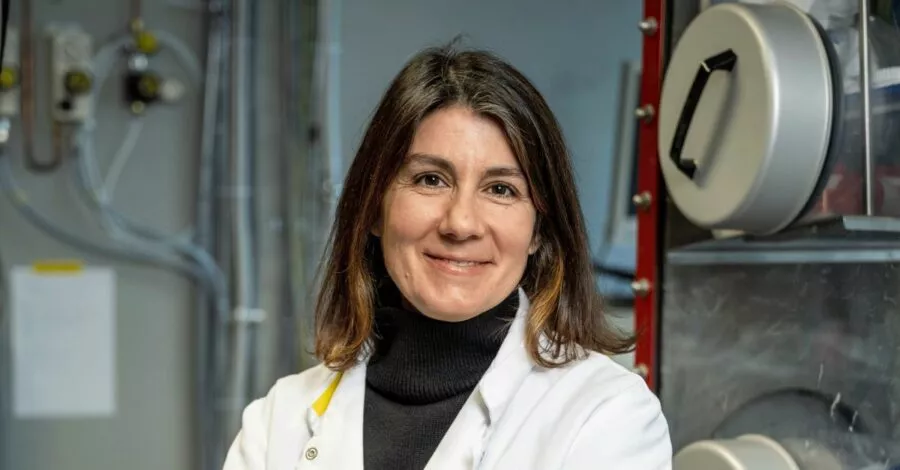
For the nine deep boreholes and the subsequent analysis of the drill cores, Nagra can rely on extensive know-how from Switzerland and abroad. Here we present scientists whose expertise contributes to the success of the project of the century of deep geological disposal. Today, we will speak with:
Géraldine Zimmerli, doctoral student at the University of Fribourg
Géraldine Zimmerli already studied the Opalinus Clay while working on her Master’s degree. At the time, she worked on drill cores retrieved from the Mont Terri Rock Laboratory in Western Switzerland. Now she is also examining and describing drill cores from Nagra’s deep borehole campaign. Her objective is to understand how the Opalinus Clay was deposited around 173 million years ago.

How did you end up working together with Nagra?
I already studied the Opalinus Clay of Western Switzerland during my Master’s degree. Afterwards, I enquired whether this topic could be turned into an interesting PhD project. And things just worked out from there. We developed my project and I could get to work. The quality of Nagra’s new drill cores is simply amazing! My enthusiasm for geological issues such as these is so great that I was simply delighted to work on these drill cores.
Where does this fascination come from?
From my childhood. I often went to the mountains with my family as a child. There, you see these rocks, and how the minerals glitter – I always liked that. I knew then that I wanted to work in natural sciences. But physics, biology and maths were too one-sided for me. Geology brings all of these together. For many people, you are just “rock-crazy” (laughs). But what is really important to me: I do not just want to appreciate nature, I want to understand it.
What exactly are you investigating with the Nagra drill cores?
I try to understand how the Opalinus Clay was deposited around 173 million years ago. By describing the Opalinus Clay and making various laboratory measurements, I try to find answers to these questions.
What are the challenges?
I have now described all the drill cores and we have created a model that allows us to compare all of Switzerland’s drill cores with each other. This did not exist before. Everyone had their own approach to characterising the drill cores, which made comparisons complicated. This is what I find challenging: to compare and discover what exactly happened to this Opalinus Clay. It is very complex, and there is a lot we don’t know yet, for example how currents could impact the deposition of the Opalinus Clay. Fortunately, I still have a little time to find answers to these questions.
What makes participating in this project special for you?
The quality of the drill cores. It is truly unique. For example, the drill cores are oriented – so we know exactly where north is. But the teamwork is also special. You don’t just work with your university professor, but with people from very different disciplines. That makes it even more exciting.
How interested are you in the fact that your work also contributes to the project of deep geological disposal?
Most of all, I am motivated by my enthusiasm for geology. But it was also important for me to be able to work on a regional project. I was aware that the repository is a project that is very important for the whole of Switzerland. This project of the century has great significance for society, so I am all the more pleased to be a part of it.
Geological enthusiasm, a Swiss project and social significance – my work combines all of these aspects.
Similar articles
What does Switzerland think about the deep geological repository?
Switzerland is confident that it can realise the project of the century of deep geological disposal. A recent, representative survey shows that acceptance is high across the whole of Switzerland and in the affected region.



